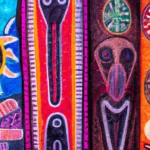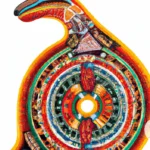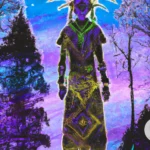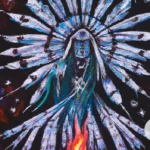Ancient traditions have a way of capturing our imagination and transporting us to a world steeped in mysticism and wonder. One such captivating tradition is that of Australian Aboriginal totems, which have been passed down through generations as a testament to a rich cultural heritage. These totems hold deep meaning and significance in Aboriginal culture, serving as a spiritual connection, a source of identity, and a conduit for storytelling. In this article, we will delve into the origin and meaning of totems, explore their importance in Aboriginal culture, uncover the various types of totems, and delve into the rituals and ceremonies associated with them. Join us on this journey of discovery as we unravel the profound significance of Australian Aboriginal totems and their contemporary relevance in preserving a vibrant cultural legacy.
The Origin and Meaning of Totems
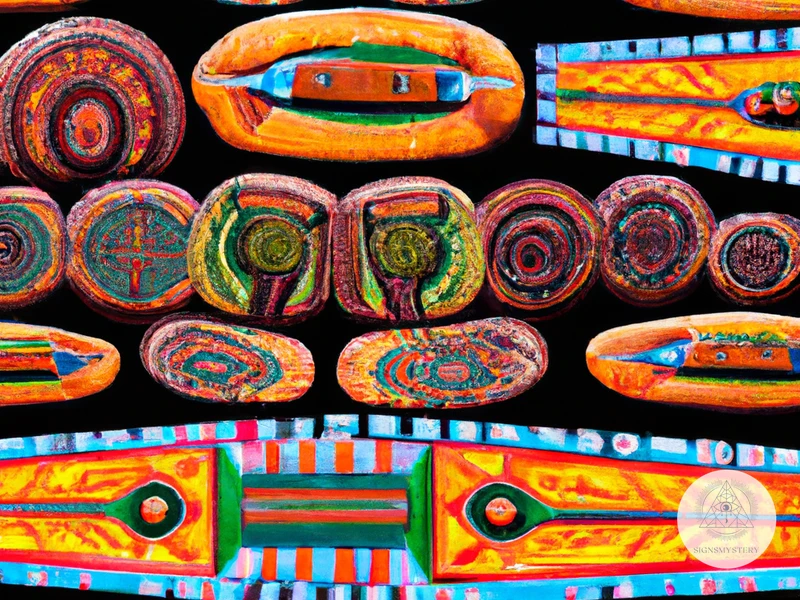
The origin of totems in Aboriginal culture is deeply rooted in the belief that everything in the natural world is interconnected and has spiritual significance. Totems serve as representations of this spiritual connection and are believed to embody the essence of a particular plant, animal, or natural element. They are seen as sacred symbols, bridging the gap between the physical and spiritual realms.
Totems hold profound meaning for Aboriginal communities, with each clan or family group having its own set of totems that are passed down through generations. These totems are believed to have been passed on from the Dreamtime, a time of creation and the spiritual origins of the world.
The meaning of totems varies depending on the specific animal, plant, or natural element that it represents. For example, animal totems carry symbolic significance associated with the qualities and traits of the animal. The snake, for instance, is often seen as a symbol of transformation and healing. It is believed to represent wisdom and intuition. Aboriginal cultures often hold snakes in high regard and see them as powerful spirit animals.
Similarly, totems can also represent ancestral connections and lineage. They serve as a way to identify and trace one’s roots back to their ancestors. This sense of connection to ancestral spirits provides a strong foundation for Aboriginal identity and cultural pride.
In addition to their personal significance, totems also play a role in storytelling and the Dreaming. The Dreaming refers to the spiritual realm where ancestral beings created the world and all living things. Totems are intertwined with Dreaming stories, serving as a visual representation of these narratives. They help to preserve cultural knowledge, transmit important teachings, and reinforce the spiritual connection to the land and its inhabitants.
The origin and meaning of totems in Aboriginal culture are deeply intertwined with spirituality, lineage, and storytelling. They are a testament to the profound interconnectedness between humans, nature, and the spiritual world. Understanding and honoring these totems provides insight into the rich cultural heritage of Aboriginal communities and fosters a deeper appreciation for the land and its sacred inhabitants.
Link: /role-animals-indigenous-cultures-nature/
Importance of Totems in Aboriginal Culture
Totems hold immense importance in Aboriginal culture, serving as a fundamental aspect of identity, spirituality, and storytelling. Their significance can be understood through three key aspects: spiritual connection, identity, and the preservation of stories and Dreaming. Spiritually, totems act as a bridge between the physical and spiritual realms. Each individual and community has their own set of totems that reflect their connection to the natural world and ancestral spirits. These totems are believed to offer protection, guidance, and a sense of belonging. Totems play a crucial role in shaping Aboriginal identity and clan affiliations, as they signify ancestral lineages and provide a sense of heritage and continuity. Lastly, totems are intertwined with storytelling and the Dreaming, acting as visual representations of ancient narratives and carrying cultural teachings from one generation to another. In this way, totems serve as a means of preserving cultural knowledge and ensuring the ongoing vitality of Aboriginal traditions.
Link: /spiritual-animal-totems-dreams/
1. Spiritual Connection
The spiritual connection is a central aspect of Aboriginal totems. The totems represent a deep bond between individuals and the spiritual essence of their chosen totem. This connection goes beyond a mere physical association and is believed to encompass the spiritual qualities and energies of the totem.
Through the totem, individuals establish a sacred connection to the natural world and its elements, embodying the essence of their chosen animal, plant, or natural element. This spiritual connection is believed to facilitate communication with the spiritual realm and ancestral spirits. It allows individuals to tap into the wisdom, guidance, and protection offered by their totem.
For example, if an individual’s totem is the snake, they are believed to possess the snake’s innate qualities, such as intuition and wisdom. They may seek guidance from their totem during times of decision-making, or they may look to the snake as a source of healing and transformation.
The spiritual connection to totems also extends to the land itself. Aboriginal people view the land as a living entity with its own spiritual energy. By honoring and respecting their totems, individuals are also honoring and respecting the land and its spiritual significance. This connection to the land forms the basis of the stewardship Aboriginal communities have towards the environment.
The spiritual connection to totems is nurtured through rituals, ceremonies, and practices that allow individuals to deepen their bond with their chosen totem. These rituals may involve storytelling, dance, song, and other forms of cultural expression. By actively engaging with their totem, individuals reaffirm and strengthen their spiritual connection.
The spiritual connection to totems is a fundamental aspect of Aboriginal culture, providing a sense of belonging, guidance, and spiritual grounding. It highlights the reverence and respect Aboriginal communities hold towards the natural world and their deep understanding of the interconnectedness of all living beings.
Link: /symbolic-meaning-snakes-spirit-animals/
2. Identity and Clan
In Aboriginal culture, totems hold immense significance when it comes to identity and clan connections. Each individual is born into a specific totemic group, and this group becomes a fundamental part of their identity. The totem serves as a symbol of their relationship with a particular animal, plant, or natural element, and it is believed that they share a spiritual connection with their totem.
The concept of totemic identity goes beyond individual affiliation. It extends to an entire clan or family group who share the same totem. These clans are organized based on their ancestral totems, and they form a vital part of Aboriginal social structure. The totem serves as a binding force, connecting individuals within the clan and reinforcing a sense of unity, kinship, and shared responsibility.
The totemic identity and clan affiliations are deeply respected and revered in Aboriginal culture. They influence many aspects of life, including marriage, kinship networks, and ceremonial practices. The totemic system contributes to maintaining social order and strengthening community bonds.
The totems associated with each clan are often reflected in artistic expressions such as paintings, carvings, and songlines. These artistic representations celebrate the totemic heritage and express the connection between individuals, clans, and the spiritual realm.
Understanding and respecting totemic identity and clan connections is crucial for both Aboriginal individuals and outsiders seeking to engage with Aboriginal communities. It fosters a sense of belonging, cultural pride, and promotes a greater appreciation for the rich tapestry of traditions and beliefs that have been passed down through generations.
By embracing and acknowledging the importance of totems in Aboriginal culture, one gains a deeper understanding of the intricate web of relationships, identity, and spirituality that underpins the Aboriginal way of life.
No relevant anchor text for internal link.
3. Stories and Dreaming
Stories and Dreaming play a significant role in the traditions and meaning of Australian Aboriginal totems. The Dreaming refers to the spiritual time of creation, when ancestral beings formed the world and set the laws and customs that govern Aboriginal culture. It is believed that these ancestral beings still exist and influence the lives of Aboriginal people today.
Totems are intimately linked to Dreaming stories, as they serve as visual representations of these narratives. These stories recount the creation of the land, the plants, the animals, and the people. They hold important teachings and wisdom, passing down cultural knowledge from one generation to another.
Dreaming stories often explain the origins of specific totems and their significance in Aboriginal culture. These stories provide a foundation for understanding the deep spiritual connections between humans, animals, and the land. They also impart important lessons about the values, morals, and social order of Aboriginal society.
The telling and retelling of Dreaming stories is a cherished tradition that not only educates but also strengthens the cultural identity of Aboriginal communities. Through storytelling, knowledge is shared, and a sense of belonging and heritage is reinforced. It is a way of preserving the past, validating the present, and guiding the future.
In Aboriginal culture, the act of storytelling is often accompanied by art forms such as rock paintings or sand drawings, which further illuminate the narratives and bring them to life. These visual representations often feature totems as central images, depicting the ancestral beings and their creations.
Through stories and Dreaming, the significance and reverence for totems are deepened. They become more than just symbols; they embody the living relationship between people, land, and ancestral beings. It is through these narratives that Aboriginal communities continue to celebrate, honor, and pass on the wisdom embedded in their totemic traditions.
No relevant anchor for linking is found in the text.
Selection and Discovery of Totems
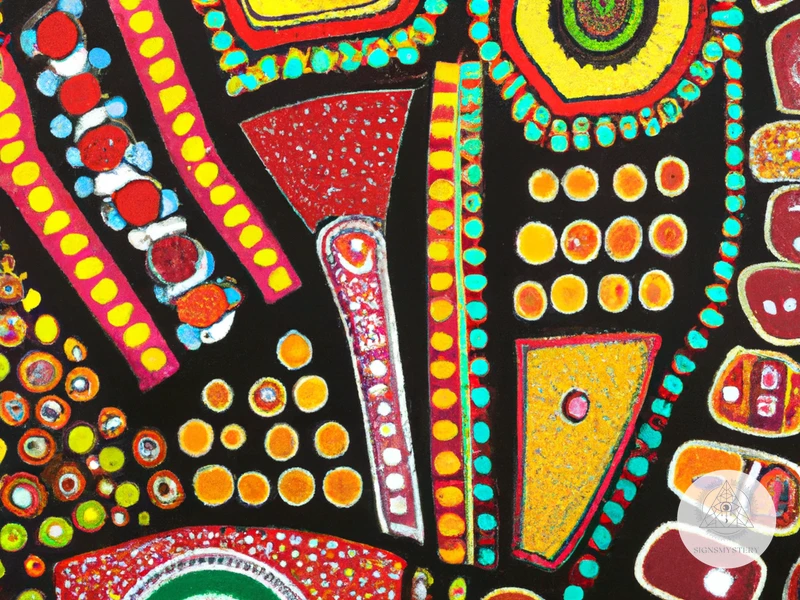
Selection and discovery of totems in Aboriginal culture is a deeply personal and significant process. There are various ways in which individuals are connected to their totems, whether through inheritance or personal experiences. Inherited totems are passed down from one’s ancestors and are deeply rooted in family lineage and clan affiliations. These totems are received as a sacred gift and carry on the spiritual connection to one’s ancestors. On the other hand, personal totems are unique to each individual and can be discovered through experiences, dreams, or visions. These totems reveal themselves to the individual as a sign or symbol, often linked to a particular animal, plant, or natural element. Totem discovery is a spiritual journey that involves deep reflection, intuition, and a connection to the land and its inhabitants. It is believed that the totem chooses the individual, and this divine connection is honored and embraced as an integral part of one’s identity and spiritual journey.
1. Inherited Totems
In Aboriginal culture, the concept of inherited totems holds significant importance. Inherited totems are passed down from generation to generation within a family or clan and are deeply connected to ancestral lineage. These totems are believed to embody the spiritual essence and qualities of a specific animal, plant, or natural element.
The process of inheriting totems begins at birth or in early childhood. The totem is usually determined through a complex series of rituals, consultations with elders, and ancestral understanding. The choice of the totem is based on factors such as family history, connections to the land, and spiritual guidance.
Inherited totems serve as a source of identity and belonging for individuals within the community. They provide a sense of connection to the land and its spiritual beings, as well as to the ancestors who have come before. Totems are seen as a sacred inheritance, carrying the wisdom, knowledge, and protection of the ancestors.
These inherited totems play a significant role in Aboriginal ceremonies, rituals, and everyday life. They are honored and respected, and individuals with the same totem are considered to be part of the same family or kinship group. Inherited totems also have a practical function, helping to maintain balance and harmony within the community and the natural world.
The inheritance of totems is a deeply personal and sacred process in Aboriginal culture. It serves as a way to honor and preserve ancestral connections, pass down cultural knowledge, and strengthen the sense of identity and belonging within the community.
Link: /symbolic-meaning-snakes-spirit-animals/
2. Personal Totems
Personal totems hold a special significance in Aboriginal culture as they are unique to each individual. While inherited totems are passed down through family lines, personal totems are chosen or discovered by an individual based on their own experiences, dreams, and spiritual connections. These totems reflect an individual’s essence, personality, and spiritual journey.
Discovering a personal totem often involves deep introspection and connection with nature. It may be inspired by dreams, visions, or encounters with a particular animal or natural element. For example, someone might choose a personal totem of a dolphin because they had a profound spiritual experience while swimming with dolphins, or they may choose a personal totem of a eucalyptus tree because they feel a strong sense of peace and grounding when surrounded by these trees.
A personal totem can have a significant impact on an individual’s life, serving as a guide, protector, and source of inspiration and support. It is believed that by aligning oneself with their personal totem, they can tap into its unique qualities and strengths. For example, someone with a personal totem of a wolf may strive to embody the wolf’s characteristics of loyalty, perseverance, and teamwork.
Personal totems can also change and evolve over time as an individual’s journey and experiences unfold. A person may feel a strong connection to a particular totem during one phase of their life, only to discover a new totem that resonates more deeply with them later on. This fluidity allows for personal growth and transformation.
It is important to note that personal totems are deeply personal and sacred. They are not chosen lightly or for superficial reasons. They are chosen with intention and respect, and their significance is honored and celebrated within Aboriginal communities.
Embracing personal totems not only strengthens an individual’s connection to their own spirit and identity but also fosters a deeper appreciation for the diverse array of totems found within Aboriginal culture. It is through this honoring of personal totems that individuals can find a sense of purpose, guidance, and spiritual harmony.
Link: /spiritual-animal-totems-dreams/
3. Totem Discovery
When it comes to discovering one’s personal totem, there are several ways that this can be achieved within Aboriginal culture. The process of totem discovery is deeply rooted in spiritual beliefs and personal experiences. Here are three common methods of totem discovery:
- Vision Quests: Aboriginal individuals may embark on a vision quest, a spiritual journey undertaken to seek guidance and insight. During a vision quest, individuals may isolate themselves in nature, fasting and meditating for extended periods. Through this introspective process, it is believed that one can receive visions or encounters with spiritual beings that reveal their personal totem.
- Intuition and Dreams: Another method of totem discovery is through intuition and dreams. Aboriginal people place great importance on dreams as a means of communication from the spiritual realm. They believe that dreams can provide messages and guidance. In this context, individuals may receive symbolic messages or encounters with their totem animals or elements in their dreams, leading them to discover their personal totem.
- Natural Signs and Synchronicities: Aboriginal people are deeply connected to the natural world and believe that it communicates with them through signs and synchronicities. These signs can be found in the behavior of animals, unusual occurrences in nature, or repeated encounters with a specific animal or element. Paying attention to these signs and interpreting them can lead to the discovery of a personal totem.
It is important to note that totem discovery is a deeply personal and spiritual process. It requires individuals to be open-minded, receptive, and attuned to their surroundings and inner experiences. The discovery of a personal totem is seen as an important milestone in Aboriginal culture, connecting individuals to their spiritual identity and providing them with guidance and protection throughout their lives.
Types of Totems
Totems in Aboriginal culture come in various forms and represent different aspects of the natural world. One type of totem is the animal totem, which symbolizes the qualities and characteristics of specific animals. These totems often embody the wisdom, strength, or agility of animals and are considered spiritual guides. Another type is the elemental totem, which represents natural elements such as fire, water, earth, or air. These totems are associated with specific landscapes or environments and hold significance in the balance and harmony of the natural world. Ancestral totems connect individuals to their lineage and ancestral spirits, serving as a reminder of their roots and cultural heritage. Dream totems are symbols that hold significant meaning within the Dreaming stories, representing ancestral beings and the creation of specific land formations or natural phenomena. Each type of totem carries its own unique symbolism and meaning, contributing to the rich tapestry of Aboriginal culture and spiritual beliefs.
1. Animal Totems
Animal totems hold a significant place in Aboriginal culture, representing a deep connection between humans and the natural world. These totems serve as symbolic representations of specific animals and carry profound meanings and characteristics associated with them. Here are some examples of animal totems and their significance:
1. Kangaroo: The kangaroo is a widely recognized animal totem in Aboriginal culture. It symbolizes strength, agility, and adaptability. In Aboriginal Dreaming stories, the kangaroo is often depicted as a powerful and resilient creature, representing the ability to overcome challenges and navigate through life’s obstacles.
2. Eagle: The eagle is revered as a symbol of wisdom, vision, and spiritual insight. It is believed to possess great wisdom and the ability to soar to great heights, representing a connection to the spiritual realm. The eagle is often associated with leadership, courage, and the ability to see the bigger picture.
3. Snake: The snake is a potent and transformative animal totem. It symbolizes healing, transformation, and rebirth. In Aboriginal culture, snakes are seen as powerful spiritual guides and are associated with the cycle of life, death, and regeneration. The snake totem represents the ability to shed old skin and embrace personal growth and transformation.
4. Emu: The emu is a revered animal totem known for its nurturing and protective qualities. It symbolizes family, community, and the importance of caring for one another. The emu is often associated with maternal instincts, teaching the value of compassion, and the significance of communal harmony.
5. Crocodile: In Aboriginal culture, the crocodile is an emblem of survival, power, and adaptability. It represents the ability to navigate both land and water, highlighting the importance of being adaptable in different environments. The crocodile totem is also symbolic of patience and resilience, often associated with ancient wisdom.
Each animal totem holds unique meanings and teachings within Aboriginal culture. They are revered as spiritual guides and are seen as embodiments of certain qualities and traits that individuals can draw upon for strength, guidance, and connection to the natural world.
Link: /symbolic-meaning-snakes-spirit-animals/
2. Elemental Totems
Elemental totems hold a significant place in Aboriginal culture, representing the forces of nature and the essential elements that shape the world. These totems are centered around earth, fire, water, and air, embodying their unique qualities and energies.
The earth totem symbolizes stability, grounding, and fertility. It is associated with the land itself, representing the connection to the ancestral homeland and the nourishing qualities that the earth provides. Aboriginal communities often see the earth as a source of life and sustenance, and the earth totem serves as a reminder of the importance of respecting and honoring the land that sustains them.
The fire totem represents the transformative and healing powers of fire. Fire has long been used in Aboriginal ceremonies for purification and cleansing rituals. It is seen as a force of renewal and a source of warmth and light. The fire totem carries the symbolism of passion, transformation, and the ability to ignite change and growth within oneself.
Water totems are associated with the life-giving and purifying qualities of water. It represents the fluidity of emotions, adaptability, and the ability to flow with the currents of life. Water is considered sacred and plays a vital role in Aboriginal spirituality. The water totem serves as a reminder of the spiritual and physical sustenance that water provides and the
Subscribe to Our Newsletter
Sign up to receive the latest news and updates.
The air totem signifies communication, knowledge, and the breath of life. It represents the intangible qualities that connect humans to the spirit realm. The air totem embodies the power of intuition and intellectual pursuits. Aboriginal communities believe that the wind carries messages from ancestral spirits, and the air totem serves as a conduit for receiving and interpreting these messages.
Each elemental totem holds its own significance and symbolism, contributing to the rich tapestry of Aboriginal culture. These totems are deeply intertwined with the natural world and serve as a reminder of the interconnectedness between humans, the elements, and the spiritual realm. Embracing and understanding elemental totems provides a deeper sense of harmony and respect for the forces that shape our existence.
Link: None.
3. Ancestral Totems
Ancestral totems hold a special place in Aboriginal culture, serving as a direct connection to the lineage and wisdom of their ancestors. These totems represent specific ancestral beings or spirits who played a significant role in the creation of the land and its inhabitants. Ancestral totems are often highly revered and are believed to possess great power and guidance.
Each clan or family group within Aboriginal communities inherits their own set of ancestral totems. These totems can be animals, plants, or natural elements that were associated with their ancestral spirits. They are seen as guardians and protectors, watching over the clan and ensuring their spiritual and physical well-being.
Ancestral totems are not chosen, but rather bestowed upon individuals through their family lineage. The totem carries the ancestral spirit’s energy and wisdom, serving as a guide throughout the person’s life. It is believed that the individual shares a special bond with their ancestral totem, and that it provides them with strength, resilience, and a sense of identity.
The role of ancestral totems extends beyond the personal connection. They also serve as a way to trace and acknowledge the ancestral lineage of the community as a whole. Through these totems, Aboriginal communities establish a sense of continuity and collective identity, honoring their shared heritage and ancestral connections.
Rituals and ceremonies play a vital role in honoring and engaging with ancestral totems. These rituals often involve dance, music, storytelling, and the use of symbolic artifacts. The purpose of these rituals is to establish a connection with the ancestral spirits and seek their guidance, protection, and blessings.
Ancestral totems are not simply objects or symbols; they are profound representations of the spiritual and cultural heritage of Aboriginal communities. They embody the wisdom, strength, and connection to the land passed down through generations. By honoring and respecting these ancestral totems, Aboriginal communities maintain their traditions, preserve their identity, and ensure the continued presence of their ancestors in their lives.
No link:
4. Dream Totems
Dream totems hold a special place in Aboriginal culture, representing an intersection between the dream world and reality. These totems are believed to be revealed through dreams and serve as spiritual guides and protectors. Dream totems are deeply personal and unique to each individual, representing their own spiritual journey and connection to the Dreaming.
When an individual has a significant dream that involves a particular animal, plant, or natural element, it is believed that this dream is a message from the spiritual realm. The dream totem that is revealed in the dream holds symbolic meaning and can provide guidance, insight, and protection.
Dream totems can take many forms and vary from person to person. They may be an animal, such as a kangaroo or eagle, or they could be representative of a specific element, like fire or water. The meaning and significance of dream totems are deeply personal and may not always align with the traditional cultural symbolism associated with certain animals or elements.
Once a dream totem has been revealed, individuals will often seek to understand and connect with its meaning. This may involve seeking guidance from Aboriginal elders or traditional healers to interpret and navigate the spiritual significance of the dream totem.
Dream totems are not only significant for individuals but also serve as a means of communication between the spiritual realm and the wider community. Stories and experiences associated with dream totems are shared to pass on cultural knowledge and spiritual teachings. This ensures the preservation and transmission of important cultural values and practices.
The recognition and honor of dream totems contribute to a deepening of personal and spiritual connections within Aboriginal culture. They provide a pathway for individuals to engage with the Dreaming and establish a connection to their ancestral heritage. Dream totems serve as reminders of the interconnectedness of the physical and spiritual worlds, guiding individuals on their spiritual journey and fostering a sense of identity, purpose, and harmony.
Understanding the significance of dream totems in Aboriginal culture allows for a greater appreciation of the complex and sacred belief systems that have been passed down through generations. It highlights the importance of dreams as a source of guidance, inspiration, and spiritual connection, further enriching the tapestry of Aboriginal cultural traditions and practices.
Totem Rituals and Ceremonies
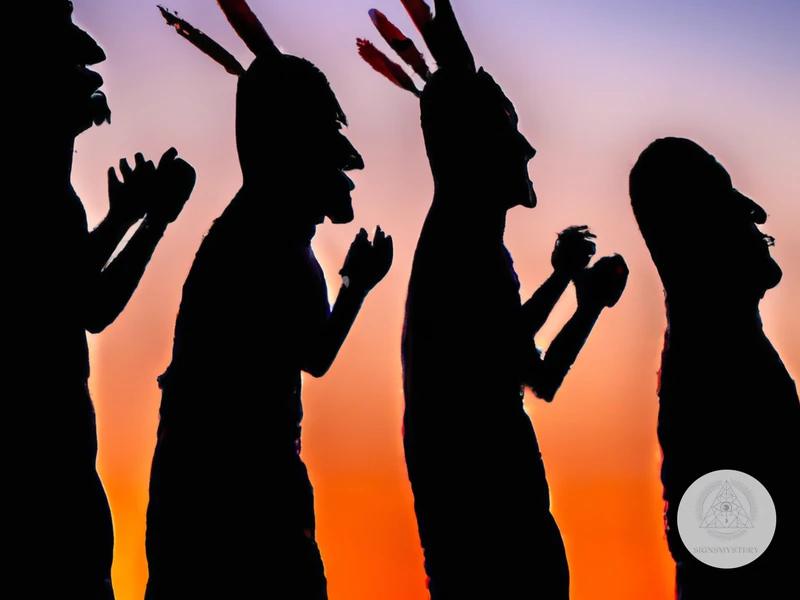
Totem rituals and ceremonies are an integral part of Aboriginal culture, providing a sacred space for honoring and connecting with the totems that hold deep spiritual significance. These rituals and ceremonies serve as a way to maintain the balance and harmony between humans, nature, and the spiritual realm.
One common form of totem ritual is the initiation ceremony, which marks the transition of individuals from childhood to adulthood. During this ceremony, young people are introduced to their inherited totems and learn about their responsibilities towards them. This ritual is a significant milestone in their lives, emphasizing their connection to their totems and the importance of carrying on the traditions of their ancestors.
Another important totem ritual is the smoking ceremony, which is conducted to purify and cleanse individuals, places, or objects. In this ceremony, native plants like eucalyptus leaves are burned, and the smoke is used to ward off negative energies and create a sense of spiritual protection. The smoke is believed to carry the messages of the totems and act as a conduit between the physical and spiritual worlds.
Dance ceremonies are also an integral part of totem rituals, with each dance representing a specific totem or Dreaming story. These dances serve as a form of storytelling, honoring the ancestors and celebrating the rich cultural heritage. Elaborate costumes and body paint are often used to represent the totems and bring the stories to life. The rhythmic movements and mesmerizing dances create a powerful atmosphere that connects the participants with their spiritual totems and the land.
In addition to these rituals, totems are also invoked and honored during various other ceremonies and gatherings. Whether it is a birth ceremony, a marriage ceremony, or a funeral ceremony, the presence of totems is acknowledged, and their blessings and protection are sought. Totemic symbols may be used in body art, paintings, or carvings to represent the totems and evoke their spiritual presence.
Totem rituals and ceremonies are deeply meaningful and form a significant part of Aboriginal cultural practices. They provide a space for individuals and communities to connect with their totems, seek guidance, and maintain a harmonious relationship with the spiritual and natural worlds.
Link: /symbolic-meaning-snakes-spirit-animals/
Contemporary Relevance and Preservation
The contemporary relevance of Aboriginal totems lies in their role as a vital link between past, present, and future generations. Despite the challenges faced by Aboriginal communities in modern times, the preservation and revitalization of totemic traditions remain a crucial aspect of cultural identity and heritage.
Preserving totems is not merely an act of cultural conservation but also a means of empowerment for Aboriginal communities. The acknowledgment and promotion of Aboriginal totems and their significance serve to reclaim and assert Indigenous knowledge, traditions, and rights. Aboriginal people actively engage in efforts to document, protect, and promote their totemic practices, ensuring their continued existence and appreciation.
Many Aboriginal communities have established cultural centers, galleries, and museums dedicated to showcasing traditional totems and educating visitors about their importance. These initiatives create opportunities for cultural exchange, fostering mutual understanding and respect between Indigenous and non-Indigenous peoples.
The contemporary relevance of totems can also be seen in their presence in various forms of artistic expression. Aboriginal artists often incorporate totems into their artwork, bridging the gap between traditional and contemporary forms of creative expression. These works serve as a medium for storytelling and cultural preservation, enabling totemic traditions to evolve and adapt to the modern world.
Totems continue to play a significant role in ceremonies and rituals within Aboriginal communities. These rituals serve as a way to honor ancestral spirits, strengthen cultural ties, and uphold traditional knowledge. By participating in totem-related ceremonies, Aboriginal people reaffirm their connections to their ancestral roots and maintain a sense of belonging and identity.
Efforts to preserve totems and ensure their continued relevance also extend to environmental conservation. Many Aboriginal communities advocate for land and wildlife protection as totems are deeply intertwined with the natural world. They recognize the importance of sustainable practices and maintaining balance between human activities and the environment, as it directly impacts the well-being of totemic species and their habitats.
The contemporary relevance and preservation of Aboriginal totems are multifaceted. They serve as a source of cultural revitalization, empowerment, and identity for Aboriginal communities. The recognition and understanding of totems foster cultural appreciation and cross-cultural dialogue. By nurturing totemic traditions, Aboriginal people continue to maintain strong connections to their past while adapting to the challenges and opportunities of the modern world.
Link: /symbolic-meaning-snakes-spirit-animals/
Conclusion
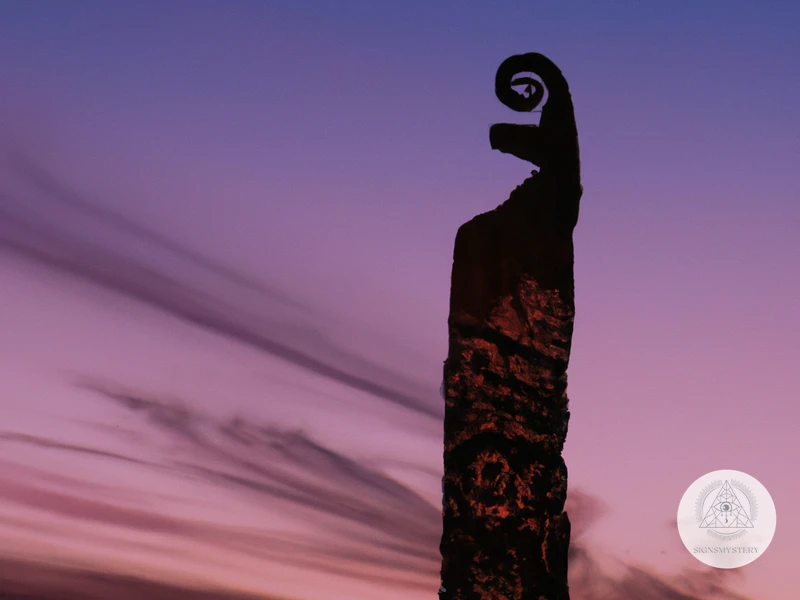
In conclusion, Australian Aboriginal totems hold immense cultural significance, serving as a tangible link to the spiritual world, ancestral lineage, and storytelling traditions. The origin and meaning of totems are deeply rooted in the belief that everything in nature has a sacred interconnectedness. Totems act as symbols of this connection, representing specific animals, plants, or natural elements.
These totems are passed down through generations, carrying with them the wisdom, teachings, and cultural identity of Aboriginal communities. They play a vital role in fostering a spiritual connection with the land and its inhabitants, reinforcing a sense of belonging and cultural pride.
Totems hold great importance in various aspects of Aboriginal life, including spiritual ceremonies, rituals, and the transmission of Dreaming stories. They serve as visual representations of these narratives, keeping the ancestral knowledge alive and preserving the cultural heritage.
As contemporary society continues to evolve, the preservation of Aboriginal totems becomes increasingly crucial. Recognizing and honoring these ancient traditions helps to maintain the vibrant cultural legacy of Aboriginal communities and fosters a deeper understanding and appreciation for their unique spiritual worldview.
By delving into the origin and meaning of totems, we gain insight into the profound wisdom, spirituality, and interconnectedness that form the foundation of Australian Aboriginal culture. Embracing these traditions not only enriches our own understanding but also contributes to the preservation and celebration of a living heritage that has been passed down through generations.
In the face of modern challenges, it is vital to continue acknowledging, respecting, and embracing the significance of Australian Aboriginal totems. By doing so, we can contribute to the preservation and revitalization of these ancient traditions, ensuring their continued existence for future generations to come.
Frequently Asked Questions
1. What is the significance of totems in Aboriginal culture?
Totems hold deep meaning and significance in Aboriginal culture as they serve as a spiritual connection, a source of identity, and a conduit for storytelling.
2. How are totems passed down through generations?
Totems are passed down through generations within Aboriginal communities, either through inheritance or personal discovery.
3. Can someone have multiple totems?
Yes, it is possible for individuals to have multiple totems, especially if they have inherited totems from different clan or family groups.
4. Are totems only associated with animals?
No, totems can represent not only animals but also plants, natural elements, and even dream symbols.
5. What is the role of totems in storytelling?
Totems play a vital role in storytelling as they serve as visual representations of Dreaming stories and help transmit cultural knowledge and teachings.
6. Can totems change over time?
While totems are generally inherited or discovered early in life, they can change over time through personal experiences and spiritual growth.
7. How do totems contribute to Aboriginal identity?
Totems contribute to Aboriginal identity by providing a strong connection to ancestral spirits and serving as a source of cultural pride and heritage.
8. Are there specific rituals or ceremonies associated with totems?
Yes, there are specific rituals and ceremonies associated with totems, such as initiation ceremonies and rituals to honor and connect with one’s totem.
9. Are totems unique to Australian Aboriginal culture?
Totems are not exclusive to Australian Aboriginal culture. Similar beliefs and practices involving totems can be found in various indigenous cultures around the world.
10. How are totems relevant in contemporary Aboriginal society?
Totems continue to be relevant in contemporary Aboriginal society as they play a crucial role in preserving cultural traditions and fostering a sense of identity and connection to the land.
References
Frequently Asked Questions
What is the significance of totems in Aboriginal culture?
Totems hold deep spiritual and cultural significance in Aboriginal culture. They serve as a way to connect individuals with their ancestral heritage, the natural world, and the Dreamtime.
How are totems chosen or discovered?
Totems can be inherited from one’s ancestors or chosen through personal experiences and connections. They can also be discovered through visions, dreams, or encounters with animals or natural elements.
Can individuals have multiple totems?
Yes, individuals can have multiple totems. Some may have inherited totems, personal totems, and even totems that they have discovered or connected with throughout their lives.
What is the role of totem rituals and ceremonies?
Totem rituals and ceremonies play a vital role in Aboriginal culture, as they provide a way for individuals to honor and connect with their totems. These rituals often involve storytelling, dances, songs, and spiritual practices.
Why are animal totems significant in Aboriginal culture?
Animal totems hold great importance in Aboriginal culture as they represent the spiritual connection between humans and the natural world. They symbolize the qualities, characteristics, and guidance that animals provide to individuals and their clans.
What are dream totems?
Dream totems are totems that are discovered through dreams or visions. These totems often have special spiritual meanings and may provide guidance, protection, or messages from the Dreamtime.
How do totems contribute to one’s sense of identity and belonging?
Totems contribute to one’s sense of identity and belonging by establishing a powerful connection to ancestral heritage, land, and community. They provide a sense of purpose, belonging, and a framework for understanding one’s place in the world.
Are the meanings of totems universal or individual?
The meanings of totems can vary depending on the individual and their cultural context. While some totems may have universal meanings within Aboriginal culture, there can also be personal interpretations and unique connections to specific totems.
How are totems preserved in contemporary Aboriginal society?
Totems are preserved in contemporary Aboriginal society through cultural practices, ceremonies, storytelling, and the passing down of knowledge from generation to generation. Indigenous communities also work to educate and raise awareness about the significance of totems among the wider population.
What can non-Indigenous people learn from Aboriginal totems?
Non-Indigenous people can learn from Aboriginal totems by recognizing the deep connection between humans and the natural world. Totems teach us to respect and value the environment, our ancestral heritage, and the importance of maintaining a balanced and harmonious relationship with the world around us.



